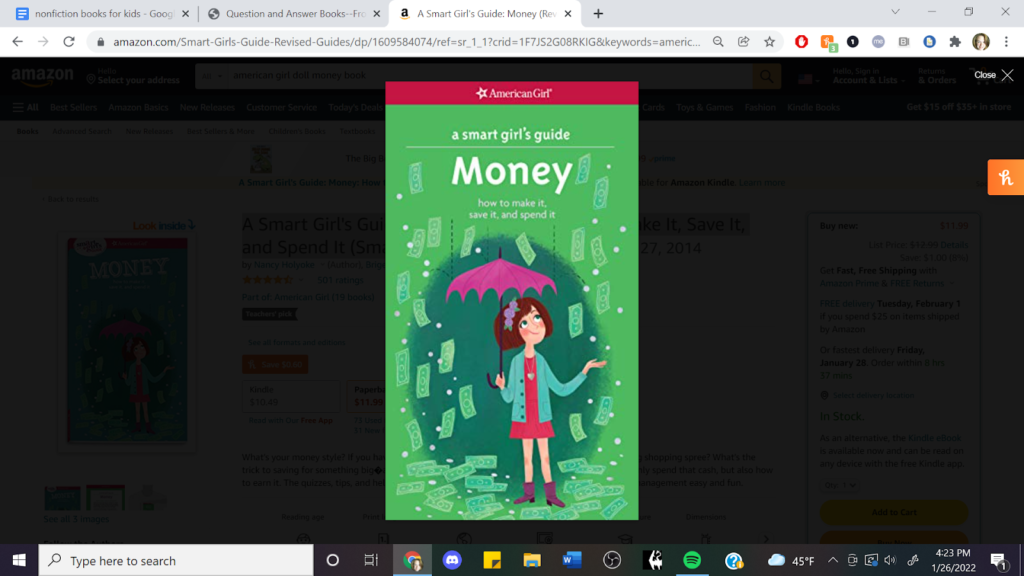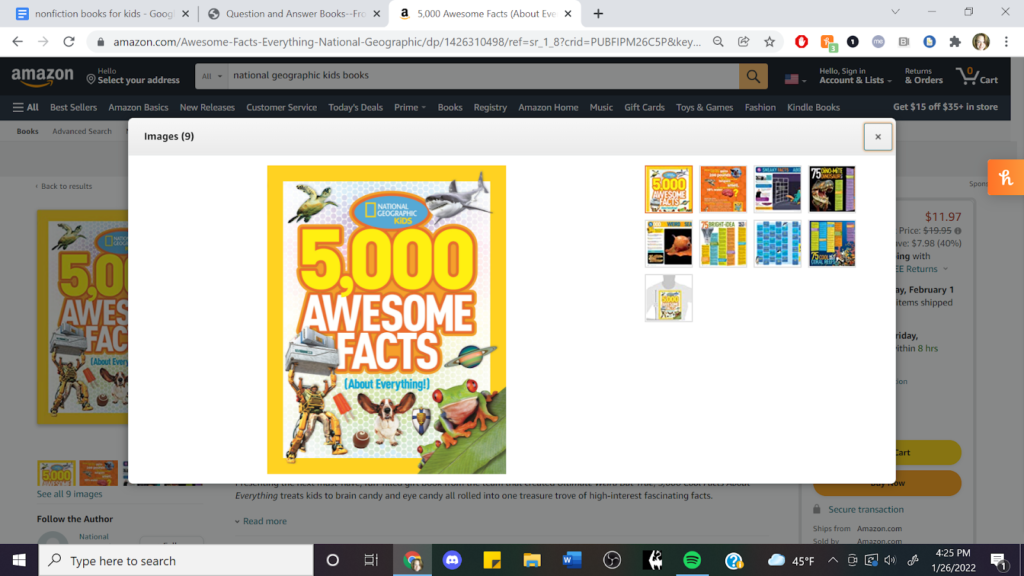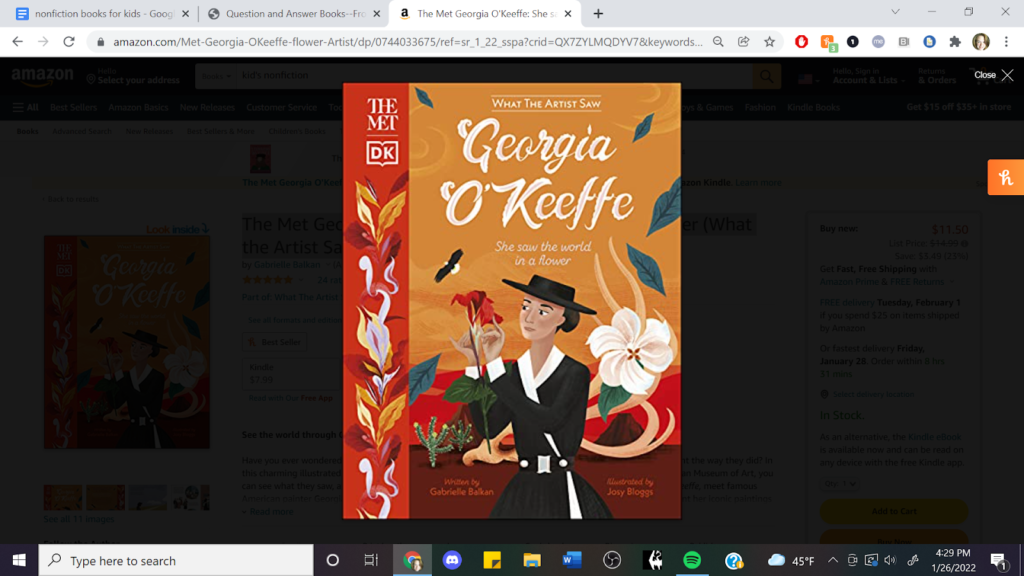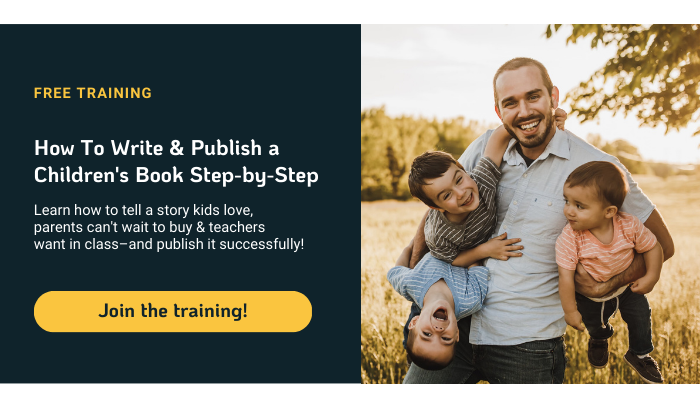If you’re thinking about writing a children’s book, you should consider nonfiction!
Kids soak up information like there’s no tomorrow, and they’re often more than happy to read about topics that interest them in a nonfiction format. Think about how many kids pick up big, sparkly books on ancient Egypt and Greek mythology—the world is a big, new place for kids, and they want to learn all about it!
In this article, we’ll talk about what nonfiction books for kids are and what types of nonfiction are suitable for kids. We’ll also go over how to write a nonfiction book that really works for kids, and we’ll give you some examples.
Table of Contents
What is a nonfiction book for kids?
Nonfiction books for kids and adults are books which are focused on real-world events, people, places, or things. In other words, the things written in nonfiction books are true in real life in a way that they aren’t in fiction.
You know the disclaimer at the beginning of most fiction books that says something along the lines of “if anything in this book seems to correlate with something in real life, that’s just a coincidence?” That’s because fiction books for kids aren’t supposed to be real or directly reflect reality. It might explore our reality, but it’s not a one to one type of deal.
Nonfiction is, though, and that’s why it can be such a useful tool for teaching kids about new concepts. Like I said earlier, the world is brand-new for a kid, and they need material to teach them about history, art, science, nature, and so on. Accessible nonfiction goes a long way in helping them learn.
Types of nonfiction suitable for kids
There are certain types of nonfiction books for kids which are more accessible, but let’s make one thing clear: there are plenty of deep, important, and ‘dark’ subjects which kids can and need to learn about. It’s important for kids to learn about death, how their bodies change, how different people are impacted by their experiences in today’s society, and all kinds of stuff.
But the way in which we deliver that information is very important. Let’s take a look at a few different types of nonfiction that kids respond well to:
Concept Books
If you’re looking to write for really young children, concept books might be your thing. Concept books cover fundamental, basic principles—think the alphabet, the color wheel, numbers, time, and that kind of thing. These books are intended to teach new readers fundamental concepts about the world around them, so these books are hugely important resources.
Craft/How-to Books
These are exactly what they sound like—these are crafting books or instructional books meant to guide children through a craft or process. These might be kid-friendly recipe books that teach them how to make a sandwich, or they might be magazines filled with budget-friendly crafts.
I’ve seen board books for kids that only require crafts including cardboard and adult supervision. There’s lots of interesting stuff out there.
These are great because they guide kids through a hands-on learning experience, which is fantastic for building reading comprehension skills, motor skills, and so on. Plus, they’re just fun!
Question and Answer Books
Question and answer books are books that are structured around a series of questions which the author answers.
There might be some kind of narrative device combined with the question and answer format—maybe the book follows a doctor who’s answering questions from different patients about basic health and fitness.
These books can cover a wide variety of content in their given subject. This format allows the author to jump from question to question without worrying too much about connective tissue, so there’s room for lots of diverse information.
Browseable Nonfiction
This was my personal favorite as a kid—browseable nonfiction is nonfiction that’s meant to be sifted through. You’re not necessarily meant to read it cover to cover. It’s often loaded with images and fun facts, and it might be divided by category to give it some structure.
Encyclopedias, the Guinness Book of World Records, and those big sparkly books on Egyptology tend to fall under this genre. Kids can pick them up and read what’s interesting to them instead of having to sit through an entire story. This makes for a dynamic reading experience, since the kid is on the hunt for something fun, and it makes it much more likely that the kid will want to read—they aren’t making a huge time commitment, and they’re in control of what they look at.
Expository Literature
Expository literature is literature that’s meant to inform the reader about something. The focus isn’t so much on entertaining or amusing the reader so much as it is about conveying information to them.
Of course, these two things aren’t mutually exclusive—it’s possible to get information across in accessible, interesting ways. But expository literature isn’t primarily concerned with being interesting.
This might look more like a textbook or a straightforward book about an animal or geological process. There might still be cool pictures, fun fonts, and exciting fun facts, but it’s presented in a much more matter-of-fact format, and there’s going to be much more information packed in there.
How to write a nonfiction book for kids – step by step
Now that we know what sorts of nonfiction books kids respond well to, let’s talk about how to write your own!
1. Pick a subject
You’re going to want something to write about, first and foremost. As with any writing endeavor, this should be something you’re passionate about, or at least something you care about. Trying to cash in on nonfiction children’s books is, for one thing, a pretty bad get-rich scheme, but it’s also probably going to result in a bad children’s book.
You don’t need to be an expert in the subject you choose. You just need to care about it enough that you’re willing to spend a long time researching it, writing about it, revising sentences about it, and discussing it.
2. Research the subject widely
This brings us to our next point—you’ll want to research your subject extensively. Get a lot of information about your chosen topic. At this stage, you want a wide scope of information. If you want to write a children’s book about the Revolutionary War, for example, you’ll want to learn as much about the Revolutionary War as you can stomach.
But, what if you’re only writing about one aspect of the Revolutionary War? Do you still need to do all that digging? Yes! Let’s talk about why:
3. Choose an angle to approach the subject
There are two main reasons why it’s important to do that initial dig for information. First, having a big scope gives you more options for picking a niche. It’s harder to pick a specific angle to approach a subject from if you only know one or two things about that subject. It’s like looking at one square inch of a giant painting—you don’t have a good idea of the rest of it, and that makes it hard to say for certain that this is the square inch you’d like to commit hours of research and writing to.
You also want context for your specific viewpoint. If you’re writing about nurses in the Revolutionary War, for example, you’ll probably want to know a little bit about what American medicine looked like at the time. You may also want information on warfare and what sorts of wounds were being treated.
Pick a specific viewpoint or angle with which to approach your subject. The more specific, the better—having a particular subject will better enable you to stay focused and concise. Even if you’re writing a question and answer book, you still want to have your specific approach in mind.
This will also make research much easier. It’s difficult to narrow down results for ‘American Revolutionary War,’ but ‘nurses in the American Revolutionary War’ is a lot more manageable.
4. Use primary sources
Now, it’s time to research our specific subject with our angle in mind. You’ll want to use as many primary sources as you can—these are first-hand accounts of a subject, usually transcribed or written or recorded by someone who was present at the time of the event.
For example: if you come across a copy of a newspaper printed the day of the event you’re writing about, this would be considered a primary source. If you’re listening to an interview from a person who was present for the event you’re writing about, that’s also a primary source.
If you’re reading a paper or book written by a scholar interpreting events that happened, these are secondary sources. They can also help lead you to primary sources and in informing you about the current discourse around a subject, but they shouldn’t be used in lieu of primary sources.
5. Consider an illustrator
Kids’ books are often packed full of photos or illustrations, and these are especially helpful in nonfiction. It’s a lot easier for most people to grasp a concept if they can see it in front of them, and that’s exactly what photos are for.
You have a few options with this. You can search for photos (make sure you have the rights to print and distribute them, though, if you didn’t take them yourself), you can draw photos yourself, or you can hire an illustrator. If you’re not interested in using photographs and you aren’t good at drawing, you’re probably going to want to hire an illustrator.
Hiring an illustrator might be as easy as getting in touch with an old friend, or you might need to do some digging online to find the perfect match. Before you do, make sure you’ve consulted your budget and determined how much you’re willing to spend on an illustrator, and make sure you’ve done your research on how much an illustrator should cost.
6. Organize your information
To keep yourself on-topic and to keep your book structured, keep your information organized. If you’re not sure how to organize all the information you gathered, try grouping it by type, first, then going from there. You may find that the information has a natural flow to it—for example, if you’re writing about how trees grow, you start with the start of the process.
Examples of nonfiction books for kids
Let’s take a look at some nonfiction books for kids to get a sense of what these types of books look like in the wild.
- A Smart Girl’s Guide: Money (Revised): How to Make It, Save It, and Spend It (Smart Girl’s Guides) by Nancy Holyoke, with illustrations by Brigette Barrager

- 5,000 Awesome Facts (About Everything!) (National Geographic Kids) by National Kids

- Treasury of Greek Mythology: Classic Stories of Gods, Goddesses, Heroes & Monsters by Donna Jo Napoli, with illustrations by Christina Balit
- The Met Georgia O’Keeffe: She saw the world in a flower (What the Artist Saw) by Gabrielle Balkan, with illustrations by Josy Bloggs

Next Steps
Now that you are more familiar with the different types of nonfiction books for kids, it’s time to take the next step. Register for this webinar and figure out how to publish your nonfiction book for kids.

